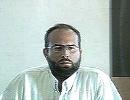The Torah study is dedicatedto the full recovery of
Dvorah bat Miriam
3850
The Sages equate fear with sin, and the Scriptures support them, for it is written: "The sinners in Zion fear; a trembling has taken hold of the profane" (Isaiah 33:14). It is told that one of the great rabbis, upon seeing his student in a state of unnecessary fear, said to him, "You are a sinner!" In this spirit the Torah teaches, "Trust in God and do good; dwell in the land and cultivate faith" (Psalms 37:3).
Some claim, "We find, though, that the sages, in keeping with the commandment to 'Protect yourself exceedingly' (Deuteronomy 4:15), repeatedly obligate man to guard himself as much as possible, and to avoid all danger. In addition, the Talmud teaches that, 'Everything is in the hands of Heaven, except for the cold and the heat.' Man is responsible for protecting himself from the cold and the heat - that is up to him. How, then, can one compare fear to sin? The Torah itself commands man to protect himself!"
Yet, there are degrees of fear. There is fear that is befitting, and there is fear that is just plain nonsense. There is healthy reliance upon God, and there is madness. God created man and endowed him with common sense in order that he follow the straight path, protecting himself from dangers. One who is careless, leaving himself unprotected and exposing himself to the elements, does not demonstrate faith, but sheer haphazardness. He is a sinner, for he goes against the desire of the Creator, who commanded man to protect himself. In addition to inviting ordinary natural danger upon himself, one who behaves in such a manner sins in his carelessness and becomes liable to God. His very transgression causes him to be punished.
Safeguarding oneself from real dangers is fear based on wisdom, and is appropriate. Concerning this sort of fear it is written: "The wise man sees evil and hides, but the fools pass on and are punished" (Proverbs 22:3). Senseless fear, though, is characterized by its excessive fanaticism, the heaping precautions upon precautions, fears upon fears and safety measures upon safety measures, to the point where it causes the disruption of Torah study and work.
The dividing line between these two types of fear was drawn by our Sages who taught that in a place where damage is common and prevalent one should be cautious, while in a place where damage is not so evident one need not fear, for a wise person knows only that which his eyes tell him. And this is exactly what the earlier mentioned passage says, "The wise man sees evil and hides." The wise man actually saw the evil and therefore hid himself, but one who does not see the evil, has no reason to hide. There is no reason to go into hiding because of what might possibly happen, or from that which could possibly occur. There is no reason to fear unfounded and imaginary notions.
According to the Midrash King Solomon had this to say concerning the nature of lazy person: When a lazy person is told: "Your Rabbi has come to the nearby town! Go to the town to learn Torah with him," he answers by saying, "I fear meeting up with a lion along the way." They say to him, "Your Rabbi has reached your neighborhood, go study Torah with him." He says to them. "I am concerned that there may be a lion lurking through the streets." They say, "He's in your house." He responds "If I go to him I will no doubt find the door locked." "The door," they persist, "is open." Finally, when he no longer knows what to say he responds, "I wish to sleep a bit." At that point it becomes clear that not the fear caused him to become lazy, but the laziness caused him to fear. Sometime laziness causes imaginary fear. When a person frees himself of exaggerated fear and fills himself with a healthy sense of confidence, he is saved from one of the sources of laziness, one of the things that prevents alacrity in good deeds. "Trust in God and do good."
-------------------------
Midrash - A general term, usually indicating the non-legalistic teachings of the Rabbis of the Talmudic era. In the period following the final editing of the Talmud (around 505 c.e.), much of this material was gathered into collections known as Midrashim .

Must My Car and Table Observe Shabbos?
Rabbi Yirmiyohu Kaganoff

Why Parshas Naso Sometimes Introduces Shavuos
Rabbi Yirmiyohu Kaganoff | 5771

Washing on Yom Kippur
Rabbi Yirmiyohu Kaganoff | Tishrei 7 5778

Why Parshas Naso Sometimes Introduces Shavuos
Rabbi Yirmiyohu Kaganoff | 5771
Daf Yomi Makkot Daf 21
R' Eli Stefansky | 1 Iyar 5785

Parashat Hashavua: More Mila than Brit?
Rabbi Yossef Carmel | Iyar 5785






